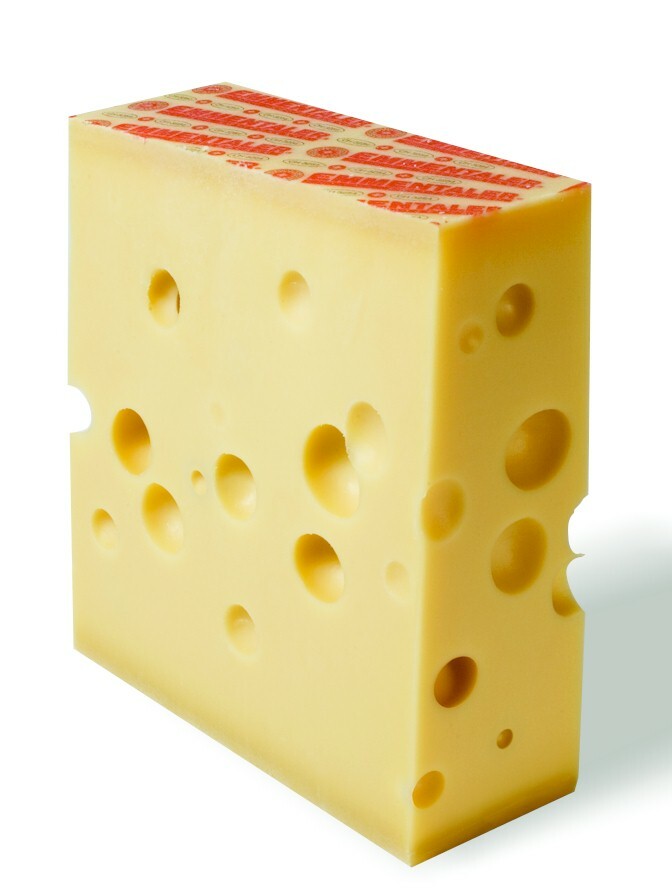Eyes (cheese) on:
[Wikipedia]
[Google]
[Amazon]
 Eyes are the round holes that are a characteristic feature of Swiss-type cheese (e.g.
Eyes are the round holes that are a characteristic feature of Swiss-type cheese (e.g.
 Eyes are the round holes that are a characteristic feature of Swiss-type cheese (e.g.
Eyes are the round holes that are a characteristic feature of Swiss-type cheese (e.g. Emmentaler cheese
Emmental, Emmentaler, or Emmenthal is a yellow, medium-hard cheese that originated in the area around Emmental, in the canton of Bern in Switzerland. It is classified as a Swiss-type or Alpine cheese.
Emmental was first mentioned in written reco ...
) and some Dutch-type cheeses. The eyes are bubbles of carbon dioxide
Carbon dioxide (chemical formula ) is a chemical compound made up of molecules that each have one carbon atom covalently double bonded to two oxygen atoms. It is found in the gas state at room temperature. In the air, carbon dioxide is transpar ...
gas
Gas is one of the four fundamental states of matter (the others being solid, liquid, and plasma).
A pure gas may be made up of individual atoms (e.g. a noble gas like neon), elemental molecules made from one type of atom (e.g. oxygen), or ...
. The gas is produced by various species of bacteria
Bacteria (; singular: bacterium) are ubiquitous, mostly free-living organisms often consisting of one biological cell. They constitute a large domain of prokaryotic microorganisms. Typically a few micrometres in length, bacteria were among ...
in the cheese.
Swiss cheese
In Swiss-type cheeses, the eyes form as a result of the activity of propionic acidbacteria
Bacteria (; singular: bacterium) are ubiquitous, mostly free-living organisms often consisting of one biological cell. They constitute a large domain of prokaryotic microorganisms. Typically a few micrometres in length, bacteria were among ...
(''propionibacteria
''Propionibacterium'' is a gram-positive, anaerobic, rod-shaped genus of bacteria named for their unique metabolism: They are able to synthesize propionic acid by using unusual transcarboxylase enzymes.
Its members are primarily facultative par ...
''), notably ''Propionibacterium freudenreichii
''Propionibacterium freudenreichii'' is a gram-positive, non-motile bacterium that plays an important role in the creation of Emmental cheese, and to some extent, Jarlsberg cheese, Leerdammer and Maasdam cheese. Its concentration in Swiss-ty ...
'' subsp. ''shermanii''.P.L.H. McSweeney, ''Biochemistry of Cheese Ripening: Introduction and Overview'', in: Fox, p. 349 These bacteria transform lactic acid
Lactic acid is an organic acid. It has a molecular formula . It is white in the solid state and it is miscible with water. When in the dissolved state, it forms a colorless solution. Production includes both artificial synthesis as well as natu ...
into propionic acid
Propionic acid (, from the Greek words πρῶτος : ''prōtos'', meaning "first", and πίων : ''píōn'', meaning "fat"; also known as propanoic acid) is a naturally occurring carboxylic acid with chemical formula CH3CH2CO2H. It is a liq ...
and carbon dioxide, according to the formula:
:3 Lactate → 2 Propionate
Propionic acid (, from the Greek words πρῶτος : ''prōtos'', meaning "first", and πίων : ''píōn'', meaning "fat"; also known as propanoic acid) is a naturally occurring carboxylic acid with chemical formula CH3CH2CO2H. It is a liqu ...
+ Acetate
An acetate is a salt (chemistry), salt formed by the combination of acetic acid with a base (e.g. Alkali metal, alkaline, Alkaline earth metal, earthy, Transition metal, metallic, nonmetallic or radical Radical (chemistry), base). "Acetate" als ...
+ CO2 + H2OT. Beresford, A. Williams; ''The Microbiology of Cheese Ripening'', in: Fox, p. 303
The CO2 so produced accumulates at weak points in the curd
Curd is obtained by coagulating milk in a sequential process called curdling. It can be a final dairy product or the first stage in cheesemaking. The coagulation can be caused by adding rennet or any edible acidic substance such as lemon ...
, where it forms the bubbles that become the cheese's eyes. Not all CO2 is so trapped: in an cheese, about 20 L CO2 remain in the eyes, while 60 L remain dissolved in the cheese mass and 40 L are lost from the cheese.
Dutch cheese
In Dutch-type cheeses, the CO2 that forms the eyes results from the metabolisation ofcitrate
Citric acid is an organic compound with the chemical formula HOC(CO2H)(CH2CO2H)2. It is a colorless weak organic acid. It occurs naturally in citrus fruits. In biochemistry, it is an intermediate in the citric acid cycle, which occurs in t ...
by citrate-positive ("Cit+") strains of lactococci.
Bibliography
*Polychroniadou, A. (2001). ''Eyes in cheese: a concise review.'' '' Milchwissenschaft'' 56, 74–77.References
*Footnotes
{{DEFAULTSORT:Eyes (Cheese) Cheese Carbon dioxide Food chemistry Food science